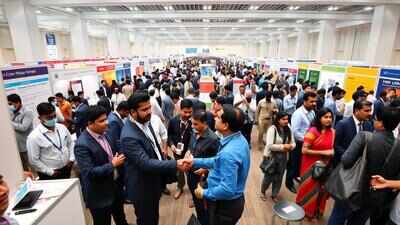ARTICLE AD BOX

There are two parameters that economists typically use to measure the economic performance of a country or any govt - growth rate and inflation.Going by GDP growth, the Indian economy expanded an average 6.8% during the UPA tenure, while averaging 6.2% between 2014-15 and 2024-25.
But keeping 2020-21, when Covid resulted in economic contraction, and 2021-22, when the base effect resulted in a massive jump in growth, the average works out to 7.1%.On inflation too, the years of Modi govt have been better, averaging 8.1%, compared with 5% during the 10 years of Manmohan Singh (although based on different base years).While there is greater focus on managing food prices by ensuring improved supply and quicker responses, a big differentiator is crude oil, which has been kinder to Modi than Singh.On June 10, 2014, the Indian basket for refiners was $107 a barrel, translating into Rs 6,331 a barrel at the then exchange rate of Rs 59.26 to a dollar. Eleven years later, PPAC data for June pegs the Indian basket at $67.38 and at Tuesday's exchange rate of Rs 85.60 to a dollar, the cost works out to Rs 5,711 a barrel - almost 11% lower."The economy delivered an average growth of 6.2% and an inflation rate of 5% over the last 11 years, despite the pandemic.
The economy is currently in a healthy shape with inflation under control, corporates and banks having healthy balance sheets, a low current account deficit, and ample forex reserves. Rains and crude oil prices, which are luck factors, are expected to be favorable this year. We expect India's GDP to grow at 6.5% in fiscal 2026, with risks tilted to the downside due to weak global prospects amid heightened uncertainty," said Crisil chief economist DK Joshi.
Economists concur that on most macro parameters, the Indian economy is healthy: India remains the fastest growing major economy, inflation is within RBI's comfort zone of under 4%, the fiscal numbers are transparent, bank and corporate balance sheets are not as fragile as 10 years ago, and the current account deficit remains within control. Apart from cleaning up its books, the Centre is seen to be prudent in fiscal management."India demonstrated exemplary commitment to fiscal prudence and discipline over the last one decade despite the unprecedented Covid shock. Accordingly, India's public debt profile turns out to be a strong advantage today, much in contrast to the current global trend. Lower public debt, along with better anchored inflation and current account deficit, political stability and strong domestic demand amidst the current uncertain global economic environment, has enormously enhanced India's attractiveness as a preferred investor destination over the past decade," said Siddhartha Sanyal, chief economist and head of research at Bandhan Bank.What govt and economists are worried about is a pick-up in private investment as companies are not adding capacity that will create more jobs. Creating more jobs in the organised sector is seen to be the biggest challenge for govt. Technology and AI are making the task tougher.Experts have argued that govt now needs to move quickly on two critical reforms - land and labour. While it did try to fix land acquisition related issues soon after coming to office in 2014, protests prompted it to drop the plans, just as it retreated on farm law amendments.
On labour, while govt managed to enact the four codes, it has been wary of notifying them, blaming the reluctance in some opposition-governed states.
They are seen to be particularly crucial at a time when India is signing several free trade agreements, which will see it lower tariffs.With BJP dependent on coalition partners, strategic sale of public sector companies and asset monetisation, which would have helped generate resources for fresh capex are issues that are on the back burner. But the new found political confidence may help Modi move faster.



.png)
.png)
.png)
















 1 day ago
9
1 day ago
9









 English (US) ·
English (US) ·